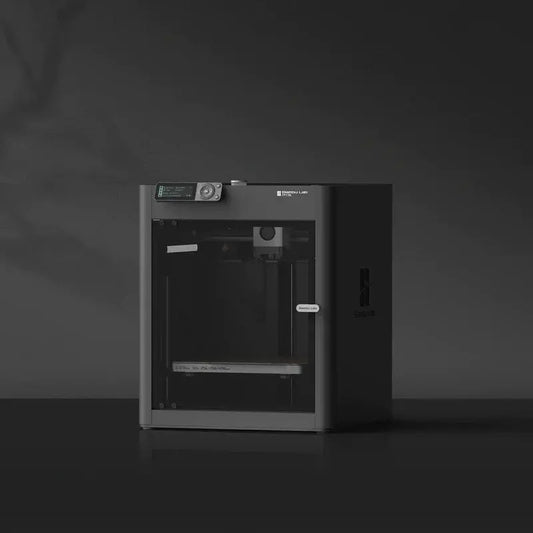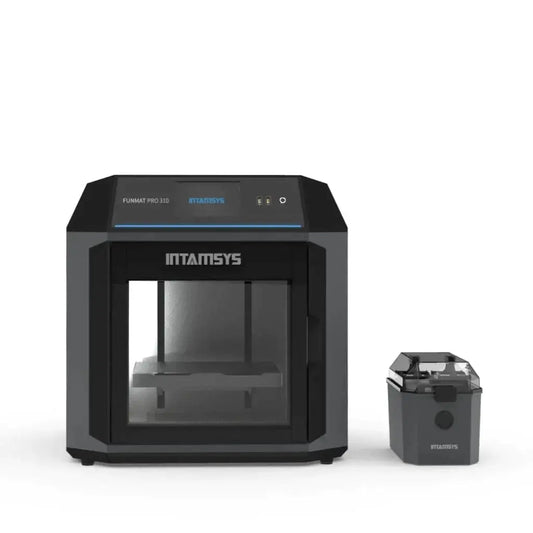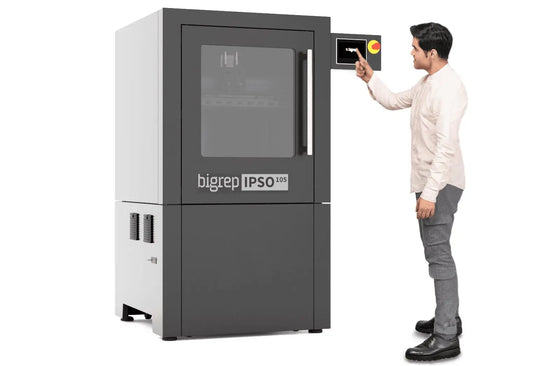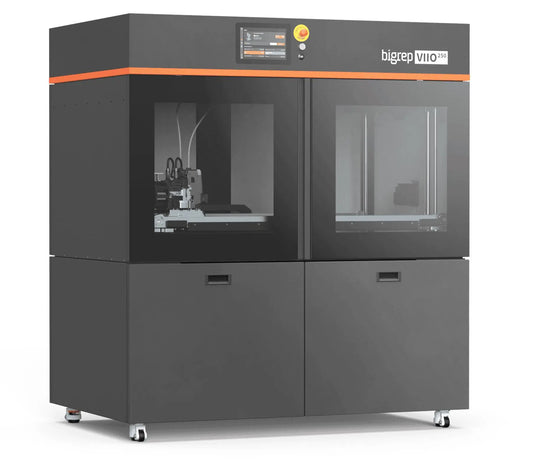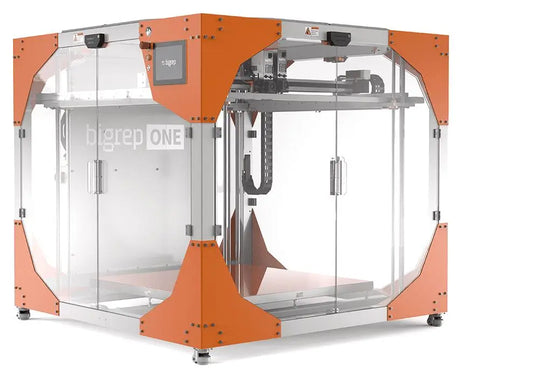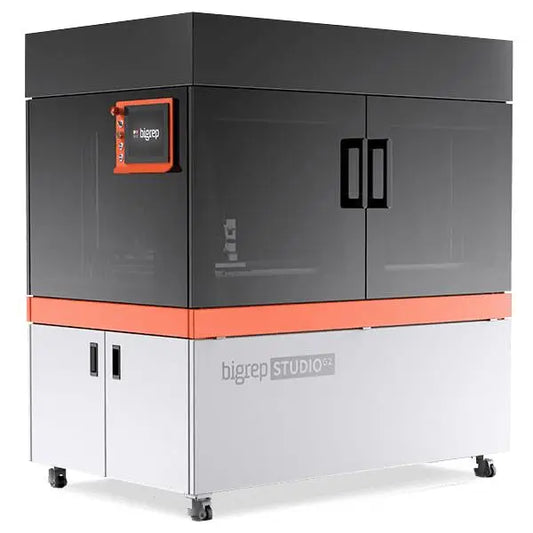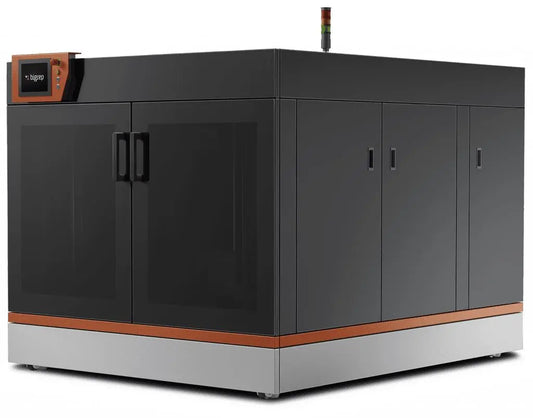Impression 3D Canada vous propose une vaste gamme d'imprimantes 3D FDM (Fused Deposition Modeling) ou FFF (Fused Filament Fabrication). Ces méthodes d'impression 3D comptent parmi les plus courantes.
Pour fabriquer un objet tridimensionnel, les imprimantes FDM déposent des couches de filaments thermoplastiques sur un plateau de fabrication. Ces objets 3D sont créés à partir de fichiers de conception assistée par ordinateur (CAO) convertis en un format compatible avec une imprimante 3D. Après l'impression par dépôt de fil fondu, le matériau de support est retiré et l'objet peut être poncé, poli ou recouvert de matériaux supplémentaires selon les besoins.
La modélisation par dépôt de fil fondu (FDM) et la fabrication de filaments fondus (FFF) désignent le même procédé d'impression 3D, où un filament thermoplastique est fondu et extrudé à travers une buse pour fabriquer des objets couche par couche. La distinction réside principalement dans la terminologie : FDM est une marque déposée de Stratasys Ltd., tandis que FFF est utilisé par le reste du secteur pour décrire la même technologie sans porter atteinte à la marque déposée.
Avantages des imprimantes 3D FDM/FFF
La technologie FDM est abordable
Grâce à leur prix très abordable, les imprimantes FDM sont considérées comme l'une des meilleures imprimantes 3D . On les trouve dans la plupart des foyers, écoles et petites entreprises, et leur popularité ne cesse de croître grâce à leur prix. Les composants de rechange sont facilement disponibles et peu coûteux, et de nombreuses entreprises peuvent réparer les imprimantes FDM en cas de panne.
Aucune installation ni formation coûteuse n'est nécessaire. Nul besoin de faire appel à un expert pour configurer l' imprimante FDM . Vous pouvez simplement acheter le kit et l'assembler vous-même, ce qui vous permet de réaliser des économies substantielles.
FDM est compatible avec de nombreux matériaux
La plupart des technologies d'impression 3D offrent des options limitées. Cependant, la technologie FDM fonctionne avec une variété de filaments, offrant ainsi un choix plus large en termes de qualité et de prix. Parmi ces filaments, on trouve :
- Acide polylactique (PLA)
- Polyéthylène téréphtalate glycol (PETG)
- Variantes thermoplastiques (TPE et TPU)
- ABS (acrylonitrile butadiène styrène)
- Acrylonitrile styrène acrylate (ASA)
- Nylon (polyamide ou PA)
Les filaments FDM ne sont pas facilement contaminés
L'une des plaintes les plus fréquentes concernant l'impression 3D avec de la résine, par exemple avec des imprimantes SLA, est la contamination. Comme ces imprimantes utilisent des bacs à résine, la poussière et d'autres polluants peuvent facilement pénétrer dans le bac et contaminer la résine, la rendant impropre à l'impression.
Comme l'imprimante FDM alimente et fait fondre des bobines de filament solide, la contamination devient moins problématique. Une petite quantité de poussière n'affectera pas la qualité de votre impression. En fait, elle brûlera ou fondra probablement lorsque le filament passera par la buse.
Vous pouvez imprimer de grandes versions
La taille du plateau d'impression est le facteur limitant pour toutes les tailles de fabrication d'imprimantes 3D, qu'elles soient 3D métal ou non. L'impression FDM se distingue par son évolutivité infinie. Si votre imprimante 3D est suffisamment grande, vous pouvez théoriquement imprimer une maison entière. La plupart des autres imprimantes Les services d’impression 3D ne le permettent pas actuellement.
Si vous souhaitez imprimer un grand objet mais que votre imprimante 3D FDM n'est pas assez grande, vous pouvez facilement le diviser en sections et les imprimer séparément, puis les assembler par la suite.
Questions fréquemment posées
Qu'est-ce que l'impression 3D FDM/FFF ?
L'impression 3D FDM/FFF, également appelée modélisation par dépôt de fil fondu/fabrication de filaments fondus, permet de fabriquer des objets couche par couche en fondant et en extrudant un filament plastique. C'est un procédé abordable et polyvalent pour la création de designs 3D.
Comment fonctionne une imprimante 3D FDM/FFF ?
Une imprimante 3D FDM/FFF fonctionne comme un petit pistolet à colle chaude automatisé, construit en plastique. Voici son fonctionnement :
- L'imprimante fait passer un fin filament de plastique à travers une buse chauffée, le faisant fondre. Ce plastique fondu est ensuite déposé couche par couche sur une plateforme de fabrication.
- Un programme de découpage découpe un modèle 3D en fines tranches, et l'imprimante FDM suit ces instructions, construisant l'objet une couche à la fois.
- Au fur et à mesure que chaque couche refroidit et durcit, une nouvelle couche est ajoutée par-dessus, formant lentement l'objet 3D complet.
Quelles sont les limites de l’impression FDM/FFF ?
- En raison du dépôt en couches, les impressions FDM/FFF présentent souvent des lignes de couches visibles, ce qui donne une texture de surface plus rugueuse.
- L'épaisseur minimale de la couche est limitée par la taille de la buse, ce qui restreint la création de détails très fins sur l'objet imprimé.
- Pour les objets avec des surplombs, des structures de support sont souvent nécessaires pour éviter qu'ils ne s'affaissent ou ne s'effondrent.



